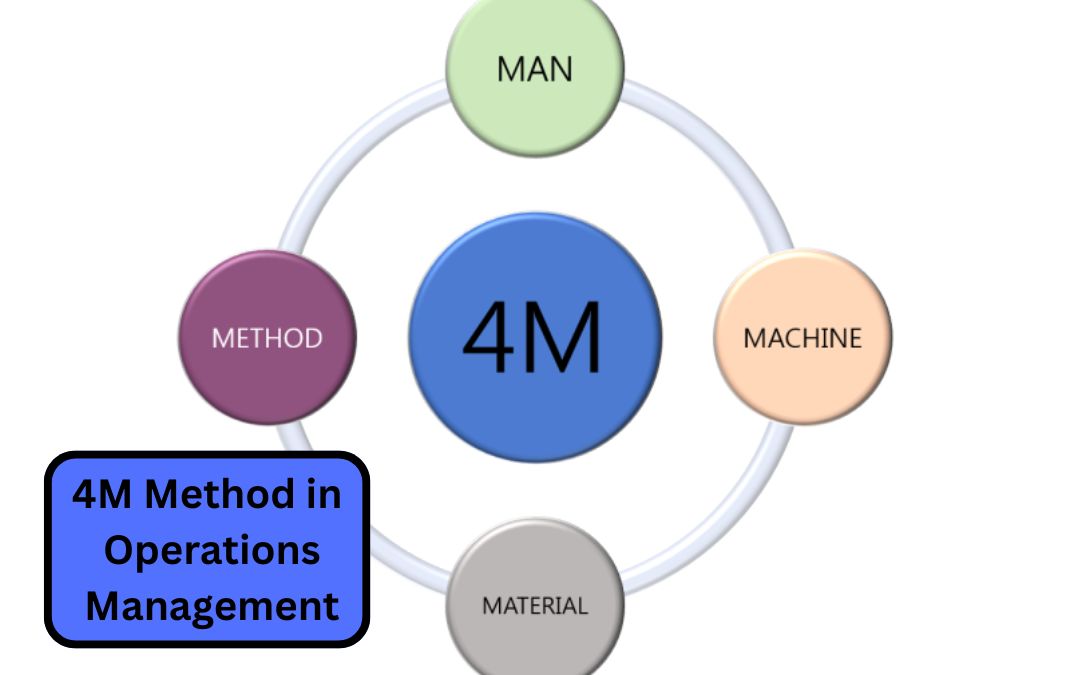In today’s business world, it’s not enough to just be famous—you have to be good at what you do. A company might attract customers with a big name, but to keep those customers coming back, the real test is in how well it delivers its products or services. That’s where operations management plays a huge role.
Especially in service-based businesses, work follows a step-by-step flow to complete tasks. To improve and tackle key challenges in this area, we first need to understand how different businesses operate. That’s where the 4Vs Framework steps in—offering a smart way to classify operations and helping organizations grow more efficiently.
What Are the 4 Types of Operations Management?
Operations management is all about planning, organizing, and improving the way businesses create and deliver products or services. There are four key types of operations management, each suited to different industries and goals.
Product-Based Operations Management
What It Means:
This type focuses on producing physical goods—everything from smartphones to packaged food. The goal is to optimize the production process and make sure customers receive quality products on time.
Main Features:
- Assembly lines and machines play a big role
- Quality control is essential
- Stock levels must be balanced carefully to meet demand without wasting resources
Example:
A soft drink factory that manufactures thousands of bottles daily to meet mass demand.
Service-Based Operations Management
What It Means:
Here, the focus is on delivering services instead of physical products. Think of banks, restaurants, or call centers. The customer experience matters a lot, and so does the efficiency of the service provided.
Main Features:
- High interaction with customers
- Staff training is key to great service
- Processes are designed to be smooth and customer-friendly
Example:
A hotel that provides personalized services to guests, focusing on comfort and satisfaction.
Batch-Based Operations Management
What It Means:
This method involves producing goods in fixed batches. It’s ideal when companies want to make a variety of products but not in massive amounts.
Main Features:
- Offers flexibility to customize products
- More efficient than making one item at a time
- Requires careful inventory planning for different product batches
Example:
A bakery that bakes 100 chocolate cakes today, 100 vanilla cakes tomorrow, adjusting based on customer orders.
Continuous Operations Management
What It Means:
This approach involves non-stop production. It’s perfect for businesses that produce the same product at a large scale with little variation.
Main Features:
- High-volume output
- Automation is heavily used
- Focus on consistency and quality
Example:
A power plant that runs 24/7 to generate electricity without interruption.
What is the 4Vs Framework in Operations Management?
Operations may vary, but they all involve turning inputs like raw materials, time, and knowledge into useful outputs—products or services. The 4Vs framework helps us understand how different businesses manage that transformation:
1. Volume – How Much You Produce
Meaning:
Volume refers to the number of items or services a company delivers.
High Volume Example:
A bottled water plant producing millions of units annually. They use machines and processes optimized for speed and efficiency.
Low Volume Example:
An art workshop that crafts a few custom pieces every month. Here, every item is unique and handmade.
2. Variety – How Many Types Do You Offer
Meaning:
Variety is about the range of different products or services a business provides.
High Variety Example:
A custom furniture studio offering sofas, tables, beds—all custom-designed for each customer.
Low Variety Example:
A canned soda factory that makes only one or two types of drinks with minimal variation.
3. Variation – How Much Demand Fluctuates
Meaning:
Variation looks at how predictable customer demand is.
Low Variation Example:
An ice cream shop that sells more in summer can plan accordingly.
High Variation Example:
An emergency room, where patient numbers change unpredictably. They must stay ready at all times, even during unexpected surges.
4. Visibility – How Much the Customer Sees
Meaning:
Visibility is about how involved or aware the customer is in the service or product delivery process.
High Visibility Example:
A coffee shop, where customers see and interact with the staff. Service quality directly impacts satisfaction.
Low Visibility Example:
A waste treatment plant, where the customer never sees the process, only the end result matters.
Final Thoughts
Whether you’re managing a factory, a service center, or a project team, understanding the 4 types of operations management and the 4Vs framework can help you streamline processes, cut costs, and improve customer satisfaction. These tools give you the lens to see what your business needs—whether it’s speed, flexibility, predictability, or personal touch.
FAQs
1. What is operations management in simple terms?
Operations management involves planning, organizing, and controlling how a company produces goods or delivers services. It ensures that resources like time, money, labor, and materials are used efficiently.
2. Why is operations management important for businesses?
It helps companies improve productivity, reduce costs, maintain quality, and meet customer demands. Good operations management ensures smooth day-to-day functioning and long-term growth.
3. What are the 4 main types of operations management?
- Product-Based Operations – Focuses on producing physical goods.
- Service-Based Operations – Centers on delivering intangible services.
- Batch-Based Operations – Involves producing items in specific groups or batches.
- Continuous Operations – Deals with nonstop, large-scale production with minimal variation.
4. What is the 4Vs model in operations management?
The 4Vs model helps classify and analyze business operations based on four key dimensions:
- Volume – How much you produce
- Variety – How many different types of products/services do you offer
- Variation – How demand changes over time
- Visibility – How much customers see or interact with the process
5. Can a business have more than one type of operations management?
Yes, many businesses use a combination. For example, a bakery might have batch-based production for cakes and service-based operations for its café.
6. How does volume affect operations?
High-volume operations rely on standardization and automation to be efficient, while low-volume operations are more flexible and customized but usually more expensive to run.
7. What is an example of high-variety operations?
A custom furniture store offering different styles, sizes, and materials for each customer is a good example. Each product is unique and requires a different process.
8. Why is visibility important in a service business?
In high-visibility operations like a restaurant or salon, customers judge the service based on what they see and experience. Their satisfaction often depends on the friendliness, speed, and atmosphere.












